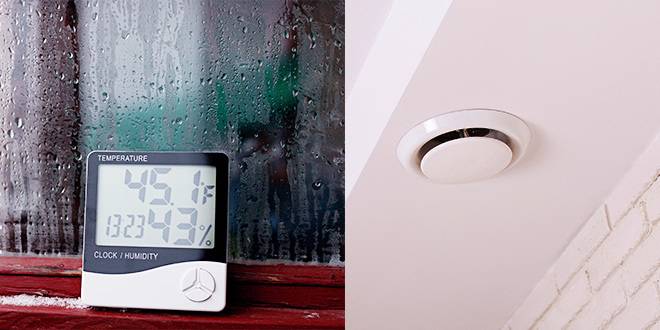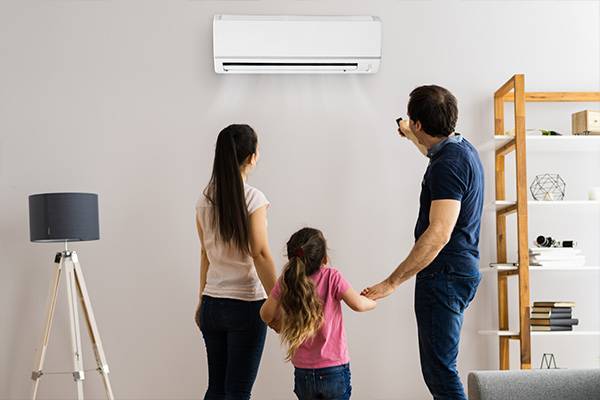In the heart of Mansfield, TX, where the weather swings from hot summers to chilly winters, maintaining the ideal indoor humidity level is not just a comfort—it’s a necessity for home and business owners. Let’s dive into finding that perfect humidity balance for your space!

🌡️ Understanding Humidity and Comfort
Humidity plays a pivotal role in our perception of comfort and well-being, especially in indoor environments where we spend the majority of our time. It’s about more than just the temperature; it’s about how the air feels. Let’s delve deeper into why achieving the right humidity level is crucial for your comfort, health, and the preservation of your belongings.
Why Humidity Matters
- Comfort: Humidity directly affects how warm or cool an environment feels. In higher humidity, sweat evaporates more slowly, making it feel warmer than it actually is. Conversely, in low humidity, sweat evaporates quickly, causing the body to feel cooler. Maintaining an optimal humidity level means that your living or working space can feel more comfortable without the need for constant adjustments to the thermostat. This balance ensures that, regardless of the season, the indoor climate feels just right, promoting a sense of well-being and comfort.
- Health: The importance of humidity for health cannot be overstated. Very low humidity can dry out the mucous membranes in your nose and throat, leaving you more susceptible to respiratory viruses and infections. It can also aggravate symptoms of asthma and allergies. On the other hand, high humidity levels can foster the growth of mold, bacteria, and dust mites, which are common allergens and irritants. Maintaining the humidity level within the optimal range (40-60%) minimizes these risks, supporting a healthier indoor environment where you can breathe easier.
- Preservation: Humidity levels can have a significant impact on the integrity and longevity of wood-based products and musical instruments. Too much moisture in the air can cause wood to expand, potentially warping furniture and causing pianos or guitars to go out of tune. Low humidity can have the opposite effect, leading to shrinkage and cracks in wood. By keeping indoor humidity levels balanced, you help ensure the durability and preservation of these valuable items, maintaining their quality and extending their lifespan.

Creating the Perfect Environment
Achieving and maintaining the ideal indoor relative humidity level is a delicate balancing act, influenced by outdoor weather conditions, indoor heating and cooling systems, and daily activities like cooking and showering. It’s not just about personal comfort; it’s about creating an environment that promotes health and preserves the condition of your home and belongings.
- Monitoring Tools: Using a hygrometer to monitor indoor humidity levels can help you keep track of fluctuations and make adjustments as needed. This small investment can pay off in improved comfort and health.
- Humidity Control Solutions: Depending on your needs, employing humidifiers in the dry months and dehumidifiers during the humid season can actively help maintain the desired humidity level. Additionally, ventilating your home by opening windows or using exhaust fans can help reduce excess moisture, especially in areas prone to dampness like kitchens and bathrooms.
- Professional Advice: Sometimes, the best course of action is to seek the guidance of HVAC professionals. They can provide tailored solutions, such as installing integrated systems that automatically adjust humidity levels, ensuring your indoor environment is always at its best.
🎯 The Sweet Spot: 40-60%
Finding the ideal indoor humidity levels is a topic of much discussion among health and HVAC professionals. The consensus? Keeping your home’s humidity level between 40% and 60% offers the best balance for human comfort, health, and even energy efficiency. Let’s explore the benefits of maintaining your indoor environment within this optimal range.
Comfort: Feeling Just Right Indoors
The human body is sensitive to the moisture content in the air, which affects our thermal comfort—the condition of mind that expresses satisfaction with the surrounding environment. Within the 40-60% humidity range, the air feels more comfortable because it aligns with the body’s natural expectations for thermal comfort. In this range, our sweat evaporates more naturally, helping to cool us down effectively in warmer temperatures. Conversely, in cooler temperatures, higher humidity levels help the air feel warmer than it actually is, reducing the need to crank up the heat.
Health: Breathing Easier
The relationship between humidity and health is significant. Maintaining the indoor humidity level within the 40-60% range can lead to fewer health issues, especially those related to respiratory function and allergens:
- Reduced Respiratory Issues: Air that is not too dry helps keep mucous membranes in the nose and throat from drying out, which can protect against viruses and bacteria. Conversely, overly humid air, which can lead to mold growth and dust mite proliferation, is minimized, helping to prevent asthma attacks and allergic reactions.
- Decreased Allergen Proliferation: Many allergens, including dust mites and molds, thrive in very high or very low humidity environments. Keeping the humidity in the sweet spot can help reduce their presence, contributing to better indoor air quality and fewer allergy symptoms.
Energy Efficiency: Saving on Bills
An often-overlooked benefit of maintaining optimal humidity levels is the positive impact on energy efficiency. Here’s how a balanced humidity level can lead to energy savings:
- Enhanced HVAC Efficiency: When the indoor humidity level is balanced, your HVAC system doesn’t have to work as hard to heat or cool your home. In high humidity, air conditioners must remove excess moisture, which requires more energy. In low humidity, heating systems have to work harder to achieve comfortable warmth. By maintaining optimal humidity, you can reduce the strain on your HVAC system.
- Natural Temperature Regulation: At the right humidity level, the indoor environment feels more naturally comfortable, potentially reducing the need to adjust the thermostat. This means your HVAC system runs less frequently, which can significantly lower energy consumption and reduce your utility bills.

🌬️ Achieving The Perfect Balance
Maintaining the right level of humidity in your home or business can significantly impact comfort, health, and even the condition of the building itself. While the task may seem daunting at first, a combination of modern technology and simple household practices can help you find that perfect balance. Here’s how to manage humidity effectively across the seasons.
In the Summer: Combating High Humidity
The sweltering summer months often bring excessive humidity, which can make the air feel uncomfortably warm and promote the growth of mold and mildew. Here are strategies to keep humidity at bay:
- Use Dehumidifiers: Portable dehumidifiers can be particularly effective in damp areas such as basements or bathrooms. By removing water from the air, they can prevent the clammy feeling and musty smells associated with high humidity. For whole-house solutions, consider a dehumidifier that works in conjunction with your HVAC system.
- Ventilation: Good airflow is essential for reducing moisture levels. Use exhaust fans in the kitchen and bathroom when cooking or showering to expel hot, moist air. Consider attic fans to reduce heat and humidity in the entire house.
- Air Conditioning: A well-maintained A/C unit does more than cool the air; it also removes moisture. Ensure your system is correctly sized and regularly serviced for optimal dehumidification performance. Setting your A/C to “auto” mode allows the fan to run only when cooling, preventing the re-introduction of moist air into your space.
In the Winter: Addressing Low Humidity
Dry air is a common problem during the colder months, leading to static electricity, respiratory discomfort, and cracked woodwork. Here are ways to add necessary moisture back into your indoor environment:
- Humidifiers: These devices can range from small, room-specific models to whole-home systems integrated into your HVAC. They add moisture to the air, preventing dryness and creating a more comfortable living environment.
- Indoor Plants: Plants naturally transpire, releasing moisture vapor into the air. Having a variety of indoor plants can help increase humidity levels, plus they add beauty and improve air quality by absorbing toxins.
- Cooking and Bathing: Embrace activities that produce steam. Leave the bathroom door open after showering (if privacy permits), or let the steam from boiling pots on the stove disperse into your home. Just be mindful of doing this in moderation to avoid swinging too far into high humidity levels.

🛠️ Tools of the Trade: Monitoring and Controlling Humidity
- Hygrometers: These devices measure the humidity level in your home or business, allowing you to adjust accordingly.
- Smart HVAC Systems: Upgraded HVAC systems can automatically adjust humidity levels, enhancing comfort without manual intervention.
- Professional HVAC Consultation: Sometimes, the best step is to consult with HVAC professionals who can offer solutions tailored to your specific needs.
🚫 Common Humidity Myths Debunked
- “High humidity is only a summer problem.” Wrong! Indoor air can become too dry in the winter, leading to different but equally problematic issues.
- “Air conditioners always solve humidity problems.” Not quite. While A/Cs do reduce humidity, extremely humid conditions can overwhelm standard units, necessitating a dehumidifier.
- “Humidifiers are only for winter.” In reality, they can be beneficial year-round in dry climates or homes with overly efficient heating systems.
💡 Pro Tips for Maintaining Ideal Humidity
- Regularly Check Your HVAC System: Ensure it’s functioning correctly and efficiently.
- Keep an Eye on the Hygrometer: Adjust your humidifier, dehumidifier, and HVAC settings as needed.
- Consider Your Environment: Adjust your humidity-controlling practices based on the current weather and indoor conditions.
Embracing the journey to optimal indoor humidity isn’t just about equipment and numbers; it’s about enhancing your quality of life. By paying attention to and adjusting your indoor humidity levels, you can create a more comfortable, healthier, and more energy-efficient environment.
🌟 Let’s Find Your Comfort Zone
Tired of the humidity hassle? C&S Air Inc. is here to help! With our expertise in HVAC systems, we can tailor solutions that keep your indoor humidity in the ideal range, ensuring your space in Mansfield, TX, remains a haven of comfort and health, no matter the season. Don’t let improper humidity levels dampen your comfort or health.
Breathe Easy with C&S Air Inc.
Finding the right indoor humidity level can be a breeze with the right partner. C&S Air is dedicated to providing the expertise and solutions you need to maintain the perfect indoor climate. From professional assessments to installing the latest in humidity control technology, we’ve got you covered. Embrace the comfort and health benefits of ideal indoor humidity. Connect with us today and take the first step toward a more comfortable tomorrow!
